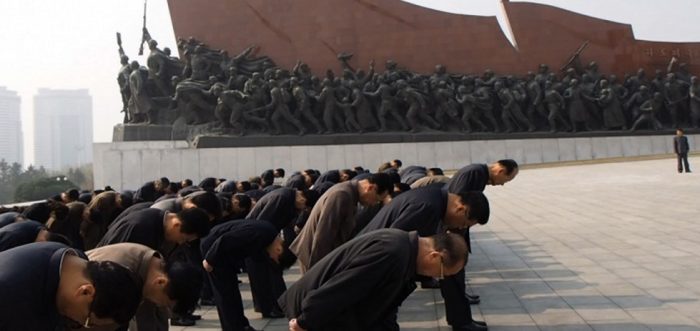An intimate look inside the world’s most locked down and satirised nation, The Propaganda Game serves as an interesting portrait of the way in which North Korea wishes to be viewed in a contemporary context, directed by a man wishing to unravel their myths at the seams.
Alvaro Longoria, after many failed attempts to gain access to the country, befriends North Korea’s only foreign diplomat – Alejandro Cao de Benos – a man of Spanish descent who pulls some strings to grant Longoria permission to film a documentary inside the hermit country under a number of strict conditions. Although Longoria is theoretically allowed to interview anyone while there, his entire itinerary is predetermined, and he is unable to leave his guides or Cao de Benos for the duration of the trip. What follows is an ultra-skewed portrait of North Korea, a free exploration of the country without any freedom, which sees Alvaro thrust into a number of eerily unrealistic situations as he attempts to draw the line between fact and fiction.
It’s a somewhat conventional documentary, albeit one with unprecedented access to the most locked down nation in the world, however its major strength lies in Longoria’s ability to disorient his audience, mincing fact with fiction to the extent that we no longer know what to believe. This places us in the shoes of Longoria himself, who over the course of his journey becomes more and more unsure which situations are real, and which have been simulated to appease his western audience, as Cao de Benos and co. attempt to use Longoria’s documentary as a North Korean propaganda piece. In fact, the central thesis of Longoria’s film hinges on a speech delivered by Barack Obama that questioned what effect a foreign country that was able to intimidate the USA out of the release of a satirical movie could have on externally produced documentaries. The introduction of a clip of this speech acts as the key to unlocking Longoria’s message – a lack of objectivity, and knowledge that at least some of what we’re seeing is false will prevent us from ever knowing the full truth of what is fact, and what is merely a fabrication.
Perhaps the film’s most impressive inclusions are, then, the sparse moments where the lie begins to unravel; Disney’s Brave is caught screening on a television screen in the background of one shot despite a blanket ban on all western cinema throughout the region. Throughout the film, we see product branding for Coca-Cola and other western products which are outlawed in the region – the explanations for their persistence in North Korea, akin to “they come branded from China, we don’t actually stock that product” feel somewhat baseless. Later moments that reveal North Korea has managed to evade US sanctions and violate trade blocs don’t come as a surprise but undermine the nationalistic manufacturing propaganda that has prevailed throughout.
It’s undoing – while minor – is the lack of freedom provided to Longoria, placing it outside the general realm of documentary with no finality or answers. In one sense, there is a counter-narrative here about the creation of propaganda which is much more interesting than the film’s tale of the oddities of North Korea. As Longoria says himself, there’s no possible way all of this could have been staged, and if we are to take Longoria on face value and trust that he has been externally influence himself, an attempt to identify and unravel all the ways in which the North Korean government have obfuscated the truth throughout the film becomes the joy of viewing. It is also worth mentioning that some of the audio quality is iffy, with background noise intruding upon one interview with a defector in particular.
For those curious to see what’s behind the curtain, The Propaganda Game is essential viewing. This is not because it contains any answers, but because it will make you question everything you’ve heard about the country from both sides of the propaganda war. In doing so Longoria attains his goal, placing a question in the minds of his (presumably) otherwise rational audience over the truth of the situation in North Korea, placing us – albeit, briefly – in the shoes of the North Korean public who’ve been bombarded with the propagandistic rhetoric for the entirety of their lives, demonstrating how this propaganda is manufactured and how it manages to prevail in a contemporary context.

